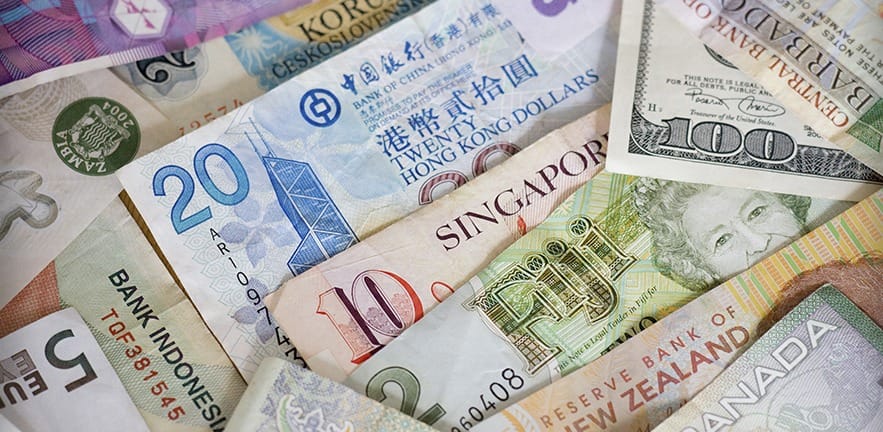John Maynard Keynes struggled as a foreign-exchange trader, finds the first detailed study of the famous economist as currency speculator.

A detailed new study of the chequered currency-trading record of John Maynard Keynes might make today’s overconfident currency speculators think twice.
While Keynes was one of the most famous economists in history, and his stock-picking record as an asset manager was outstanding, a forensic analysis of his personal currency trades found that his record was pedestrian by comparison.
The findings are forthcoming in the Journal of Economic History, in a study co-authored by Olivier Accominotti, Associate Professor of Economic History at the London School of Economics and Political Science, and by David Chambers, Reader in Finance and Academic Director of the Newton Centre for Endowment Asset Management at University of Cambridge Judge Business School.
“Unlike his stock investing, Keynes found currency investing a lot tougher despite the fact that he was at the centre of the world of international finance throughout the time he traded currencies,” said David Chambers of University of Cambridge Judge Business School, who has written numerous papers on Keynes. To be sure, Keynes made money from speculating in currencies in the 1920s and 1930s and his profits arose from more than pure chance. “Directionally, he called currencies more or less correctly but he really struggled with timing his trades. Hence, one main message for investors today is that if someone as economically literate and well-connected as Keynes found it difficult to time currencies, then the rest of us should think twice before believing we can do any better.”
In his currency trading, Keynes relied heavily on his own analysis of fundamental economic factors such as inflation, trade balance, capital flows and political developments.
Such “fundamentals-based” strategy differs from “technical” strategies that follow simple mechanical trading rules but seek profits by identifying market anomalies – typically through the carry trade (betting on high-interest currencies versus low-interest rate currencies) and momentum (betting on currencies which have recently appreciated versus those which have depreciated). In fact, we observe both fundamentals-based and technical trading styles among modern-day currency managers.
But Keynes produced unremarkable results at the dawn of the modern foreign-exchange market, when dealings were transformed by telegraphic transfer and the emergence of a forward exchange market.
The period during which he traded was marked by considerable foreign exchange volatility and large deviations of exchange rates from their fundamental values which appear obvious to investors today. However, trading these deviations in real time was hazardous. “Implementing a currency trading strategy based on the analysis of macroeconomic fundamentals was challenging (even) for John Maynard Keynes,” said the research paper, entitled “If you’re so smart: John Maynard Keynes and currency speculation in the interwar years.”
This was particularly the case in the 1920s. Currency traders can be judged in terms of the return generated per unit of risk, also known as the Sharpe Ratio. Whilst Keynes generated a Sharpe Ratio of approximately 0.2 (assuming his trading equity was fixed), the same ratio for an equal-weighted blend of the carry and momentum strategies was substantially higher at close to 1.0 after transaction costs. When he resumed currency trading in 1932 after a five-year break coinciding with the return to the gold standard, although Keynes outperformed the carry strategy (whose mean return was negative) in the 1930s, he still underperformed a simple momentum strategy.
The study also found that Keynes “experienced periods of considerable losses in both the 1920s and 1930s. Indeed, he was close to being technically bankrupt in 1920 and could only stay trading thanks to his ability to borrow funds from his social circle.”
Herein lies the second message for investors today. It therefore sometimes requires both great conviction and adequate capital resources to maintain trading positions seeking to arbitrage a substantial misalignment of fundamentals. At times this creates a problem of there not being enough traders who can undertake such arbitrage activity. Economists today refer to this problem for efficient markets as the “limits to arbitrage.” Keynes was among the first to recognise this phenomenon when he wrote: “Markets can remain irrational longer than you can remain solvent.”
Keynes’s experience with the forward market influenced his own theories of currency exchange speculation, including his formulation of the covered interest parity (CIP) condition regarding two countries’ interest rates and currency values, and a very early exposition of the limits to arbitrage problem.
The research is based on a detailed dataset of 354 personal currency trades by Keynes between 1919 and 1939 (mostly in five currencies against the British pound – the US dollar, French franc, Deutsche mark, Italian lira and Dutch guilder).
Details of the trades were contained in ledgers kept in the archives at King’s College, Cambridge, where Keynes managed the college endowment fund for decades. Famously shifting the college portfolio from property to stocks, Keynes’s investment writings based on his very successful investment strategy at King’s College later on became a source of inspiration for David Swensen, the architect of the influential “Yale model” for managing university endowments in the US today.

